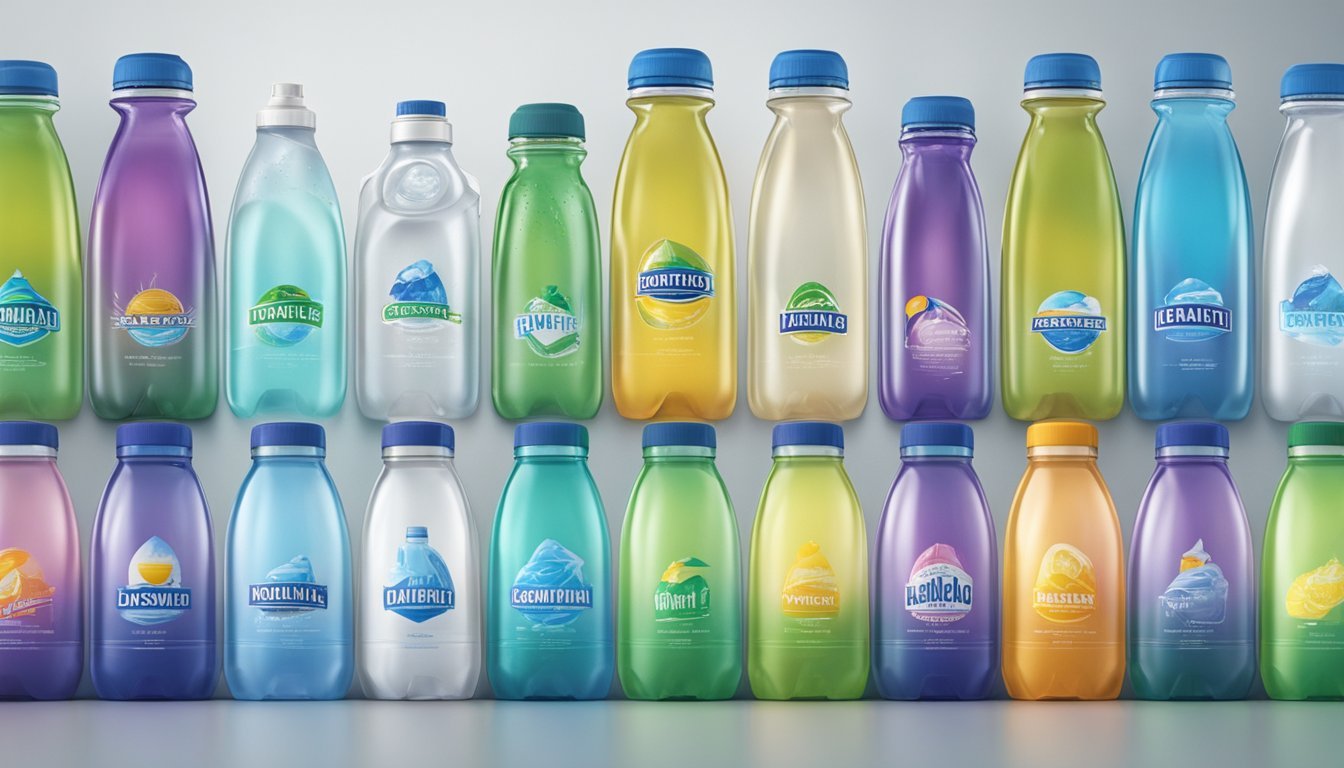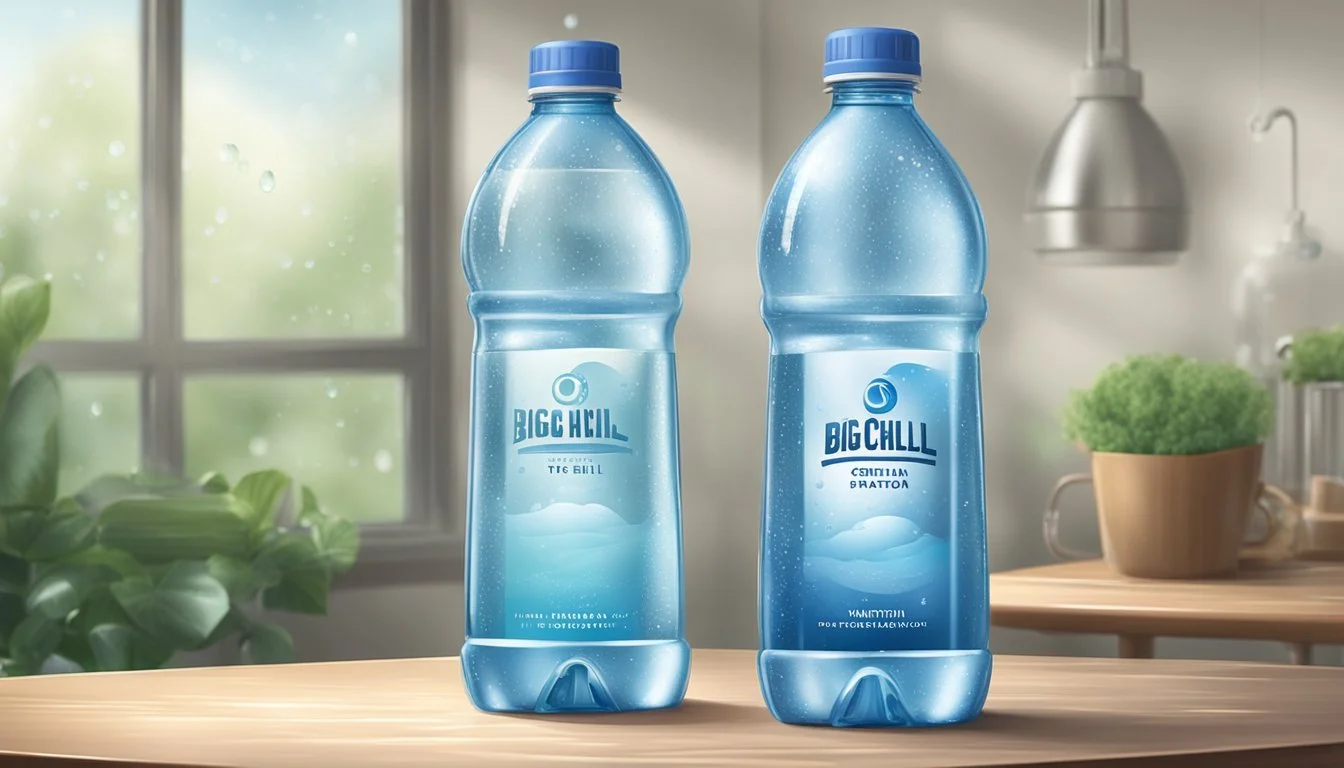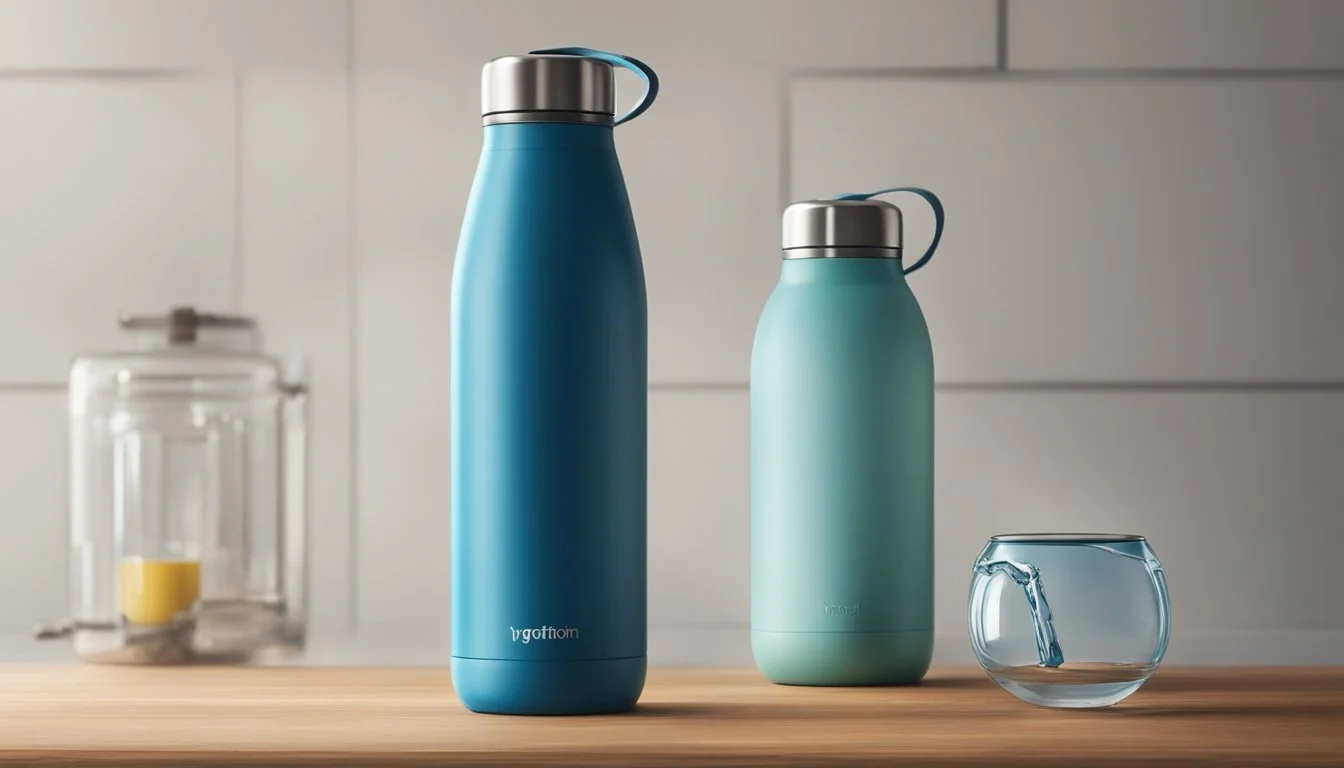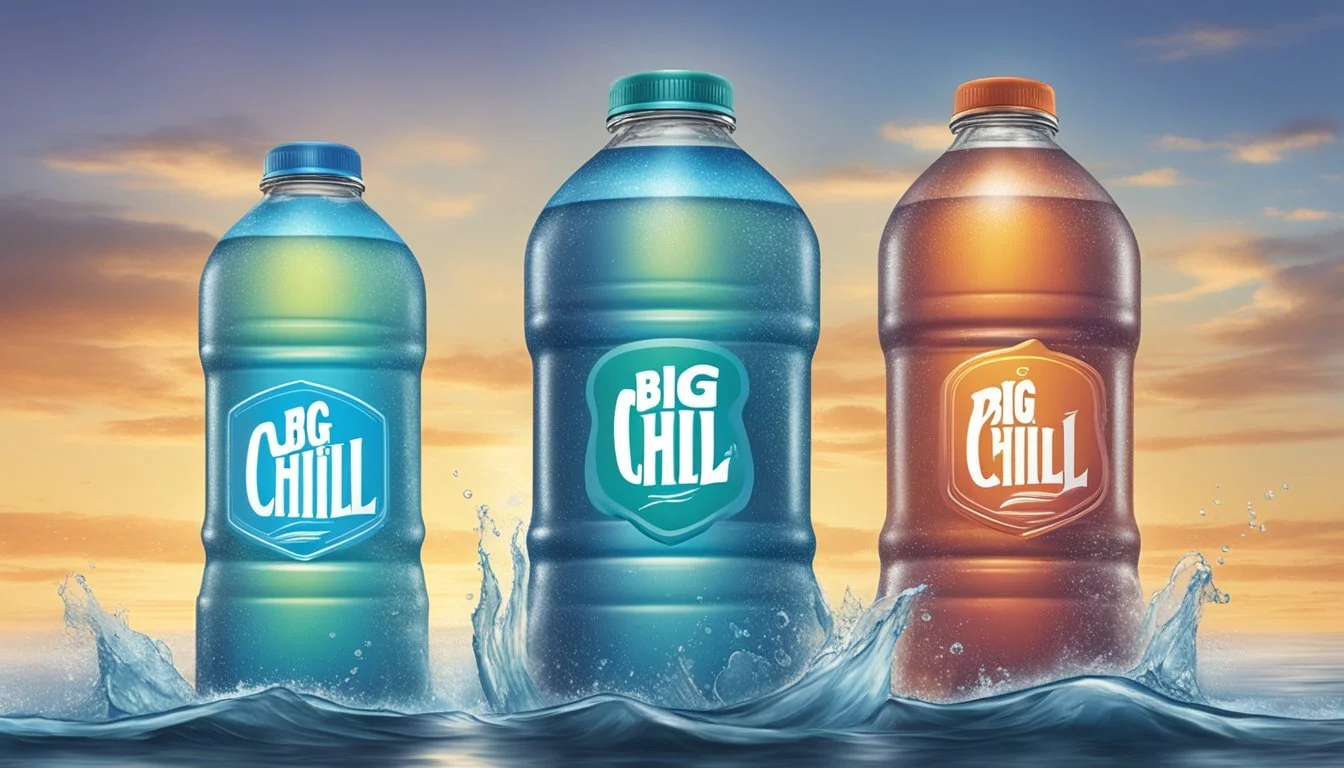Big Chill vs. The Well
Bottled Water Showdown
Choosing the best bottled water can be a refreshing yet daunting task given the numerous options available on the market. Big Chill and The Well are two popular brands that have gained significant attention, each boasting unique qualities that appeal to different tastes. These two brands are often compared due to their reputation for purity and taste, which raises the question of which one truly stands out.
Big Chill is praised for its clean taste and refreshing quality, making it a favorite choice among consumers looking for a pure and reliable hydration option. Unlike some other brands that might have a slight plastic aftertaste, Big Chill maintains a crisp and neutral flavor, ensuring that the water itself is the highlight. This brand consistently delivers a consistent drinking experience that meets high expectations.
On the other hand, The Well offers a slightly distinct experience with a subtle tang at the end that some find pleasantly unique. While it may not be everyone's preference, this hint of flavor differentiates The Well from the more straightforward taste of Big Chill. The Well has cultivated a loyal customer base who appreciate this characteristic, making it a competitive alternative in the bottled water market.
The Essence of Hydration
Proper hydration is vital for maintaining health and ensuring the body functions properly. Consuming sufficient water offers numerous health benefits and is crucial for overall well-being.
Understanding the Importance of Water for the Body
Water plays a critical role in many bodily functions. It helps maintain the balance of bodily fluids, crucial for optimal digestion, absorption, circulation, and temperature regulation.
Digestion: Water aids in breaking down food, helping the body absorb nutrients effectively.
Circulation: It is essential for circulating blood and delivering oxygen and nutrients to cells.
Temperature Regulation: Drinking water helps regulate body temperature through sweating and respiration.
A lack of adequate hydration can lead to dehydration, impacting physical and cognitive performance. Dehydration symptoms include:
Headaches
Fatigue
Dry skin
Hydration and Health Benefits
Adequate hydration brings numerous health benefits. It ensures proper joint lubrication, reducing friction and pain during physical activity. It supports kidney function by eliminating toxins and waste products efficiently.
Weight Management: Drinking water before meals can aid in weight management by promoting a feeling of fullness.
Skin Health: Proper hydration can enhance skin health, contributing to a clear and radiant complexion.
Immune Function: Water is vital for a healthy immune system, aiding in the optimal functioning of immune cells.
Tips for Staying Hydrated:
Drink a glass of water with every meal and snack.
Carry a reusable water bottle.
Optimal hydration is key to maintaining overall health and well-being. Proper water intake supports critical bodily functions and promotes long-term health benefits.
Analyzing the Bottled Water Industry
The bottled water industry has experienced significant growth influenced by rising health awareness and concerns over tap water contamination. This section explores both the journey of bottled water from its origin to retail shelves and the influential companies shaping the market.
The Journey of Bottled Water: From Source to Store
Bottled water begins its journey at a natural source, such as a spring or an artesian well. This raw water is then transported to a facility for purification, which may include processes like filtration, reverse osmosis, or ultraviolet treatment to ensure safety and quality.
After purification, the water is bottled in various sizes and types of containers, including plastic and glass bottles. Packaging must adhere to stringent sanitation standards to maintain product integrity and prevent contamination.
These bottled products are then distributed across a wide network, reaching wholesalers, retailers, and ultimately consumers. Efficient logistical operations are crucial for matching market demand and maintaining product availability in stores.
Industry Giants and Emerging Players
The bottled water market includes major global corporations as well as smaller, emerging brands. Prominent companies such as Nestlé, Coca-Cola, and PepsiCo dominate the industry with well-known brands like Perrier, Dasani, and Aquafina. These giants leverage extensive distribution networks and significant marketing budgets to maintain their market share.
Emerging players often emphasize unique selling points, such as eco-friendly packaging or sourcing from premium, less-known water bodies. Brands such as Fiji Water and Evian stand out for their focus on exclusivity and the purity of their sources.
Both large firms and new entrants continuously adapt to consumer preferences, such as demands for sustainable packaging and transparency about water origins. These shifts demonstrate the dynamic nature of the bottled water industry.
Comparative Analysis of Bottled Water Brands
Examining the differences between Big Chill and The Well highlights their unique brand histories and specific product ranges, focusing on their market strategies and consumer appeal.
Big Chill vs. The Well: Brand Histories
Big Chill began its journey in the 1990s, known for its commitment to sourcing pure, clean water from natural springs. Emphasizing transparency and sustainability, the brand has built a loyal customer base.
The Well, launched in the early 2000s, prides itself on advanced filtration techniques to ensure purity and taste. Unlike Big Chill, The Well focuses more on urban markets and offers detailed reports on water quality to gain consumer trust.
Both brands have established distinct identities — Big Chill with a rustic, nature-focused approach, and The Well with an urban, technologically savvy image.
Product Range and Target Market
Big Chill offers a limited but high-quality selection. Products include standard bottled water, naturally sparkling options, and family-size containers. Their main consumers are outdoor enthusiasts and health-conscious individuals who prefer natural sources.
The Well caters to a broader market. Their range includes enhanced waters with added electrolytes, flavored options, and environmentally friendly packaging. Targeting city dwellers and active consumers, they focus on providing convenient, modern hydration solutions.
The product strategies of both brands reflect their market positions, with Big Chill emphasizing natural purity and The Well highlighting innovation and lifestyle alignment.
Characteristics of Bottled Water
Bottled water varies significantly in terms of taste, mineral content, packaging materials, and environmental impact. These characteristics can influence a consumer's choice and perception of different brands.
Taste Profiles and Mineral Content
The taste of bottled water is influenced by its mineral content. Waters sourced from springs or wells often contain naturally occurring minerals such as calcium, magnesium, and potassium. These minerals can impart a distinctive taste. For example, calcium can lend a slightly sweet flavor, while magnesium adds a hint of bitterness.
Some bottled waters are carbonated or flavored to enhance taste. Carbonation adds fizziness, while flavors can range from citrus to berry. Consumers looking for a specific taste profile often check the mineral content label.
Packaging Differences: Plastic vs. Glass vs. Metal
Bottled water can be found in plastic, glass, and metal containers. Plastic bottles are lightweight, shatterproof, and convenient for on-the-go use. However, they may leach chemicals if exposed to heat. Glass bottles are perceived as more premium and do not leach chemicals, preserving the water's pure taste.
Metal bottles, often made of aluminum or stainless steel, offer durability and reusability. These containers can keep water cold for extended periods, appealing to those who prefer chilled drinks. Packaging choice can affect the water's taste and the consumer's drinking experience.
Environmental Impact and Sustainability Efforts
Plastic water bottles contribute significantly to environmental pollution, taking hundreds of years to decompose. They are often single-use, adding to landfill waste. On the other hand, glass and metal bottles are more environmentally friendly due to their reusability and recyclability.
Brands are increasingly adopting sustainability efforts. Some use recycled materials for their bottles, while others reduce plastic usage or offer incentives for returning bottles. Consumers are encouraged to consider these factors when choosing bottled water, as brand commitment to sustainability can make a significant impact.
Water Testing and Quality Assurance
Ensuring the safety and purity of bottled water involves rigorous testing protocols and adherence to strict regulatory standards. The methods of purification and the standards of compliance are crucial for maintaining high-quality, safe drinking water.
Methods of Water Purification
Big Chill and The Well utilize advanced purification techniques to ensure their water meets safety standards. Common methods include reverse osmosis, which removes impurities by forcing water through a semipermeable membrane. This process effectively eliminates contaminants such as arsenic, lead, and nitrates.
Another technique is distillation, where water is boiled and the steam is collected, leaving behind dissolved solids and other impurities. Both companies also employ ozonation and UV treatment to disinfect and kill bacteria and viruses without introducing harmful chemicals.
Standards and Regulations Compliance
Both Big Chill and The Well adhere to federal quality standards, which were first established in 1973. These standards, enforced by the FDA, ensure bottled water is as safe as tap water under the Safe Drinking Water Act.
Regular testing is conducted for contaminants like PFAS chemicals, which have been found in some popular brands. Both companies must comply with stringent labeling requirements, stating the source and type of water. This transparency helps consumers make informed choices about their bottled water options.
Health and Safety Considerations
Health and safety are critical factors when choosing between Big Chill and The Well bottled water. This section will examine the potential health effects of plastic bottles and the importance of BPA-free products for consumer safety.
Potential Health Effects of Plastic Bottles
Plastic water bottles are made from various materials, including polyethylene terephthalate (PET) and high-density polyethylene (HDPE). Concerns about chemicals leaching into the water from these containers are prevalent. Plastic bottles can release substances like antimony and phthalates, especially when exposed to heat or reused.
The leaching of such chemicals might pose risks to human health, including hormonal disruptions and increased cancer risk. While studies indicate that regular exposure levels are generally low, consistent consumption from plastic bottles remains a concern. Thus, consumers should avoid storing bottled water in hot environments to minimize potential health risks.
BPA-Free Products and Consumer Safety
Bisphenol A (BPA) is a chemical found in some plastics, known for its potential to disrupt endocrine functions. BPA can seep into the water from containers made with this compound, leading to various health issues such as fertility problems and developmental effects in children.
Many manufacturers, including Big Chill and The Well, now offer BPA-free products to alleviate these concerns. BPA-free plastics use alternatives like bisphenol S (BPS) or bisphenol F (BPF), which are believed to be safer options. However, the long-term effects of these substitutes are still under scrutiny. Thus, consumers should verify the BPA-free status of bottled water products to ensure safer consumption.
User Experience and Convenience
User experience and convenience are key aspects when choosing between Big Chill and The Well bottled water. Important factors include bottle design features, ease of use in various settings, and overall practicality for daily routines.
Ease of Use: Bottle Design and Features
Big Chill boasts a modern design with ergonomic packaging, making it comfortable to hold and easier to carry. The bottle features a wide-mouth opening, ideal for quick sips or refilling. It also comes equipped with an insulated design, maintaining the temperature of the water for longer periods.
The Well focuses on a sleek, minimalist design that fits well in most cup holders and backpacks. Its narrow mouth offers a more controlled pour, preventing spills. Furthermore, the material is lightweight yet durable, emphasizing portability and ease of use.
Both Big Chill and The Well are designed to be leak-proof, ensuring no accidental spills in bags or on desks.
Practicality for Daily Use: Home, Work, and Gym
In terms of day-to-day practicality, Big Chill excels at versatility. Its insulated design is especially advantageous for gym enthusiasts and people on the go, keeping water cold through extended periods. It's also convenient for home use, as the bottle can easily be refrigerated and reused.
Meanwhile, The Well offers superior portability, making it a great option for both work and travel. Its slim form is ideal for slipping into backpacks and fitting into tight spaces like cup holders. This makes it particularly useful in professional environments where desk space is at a premium.
At the gym, The Well might be less durable than Big Chill, but it offers quick access and easy storage in gym bags.
This focus on practical applications ensures both brands serve different yet complementary needs.
Technological Innovations in Insulation
Technological advancements in insulation for water bottles have significantly improved temperature retention capabilities. The discussion will focus on vacuum insulation and how different models compare in maintaining temperatures for 12 to 24 hours.
Vacuum Insulation and Temperature Retention
Vacuum insulation is a widely used technology in high-quality insulated water bottles. This method involves creating a vacuum between two layers of stainless steel or other materials. The absence of air minimizes heat transfer, helping maintain the temperature of the liquid inside.
The efficiency of vacuum insulation is measured by how well it retains temperatures. Premium products claim to keep beverages cold for up to 24 hours and hot for up to 12 hours. This performance relies on the quality of materials and the precision in manufacturing the vacuum seal.
Water bottles using this technology often include additional features like copper lining to enhance thermal performance. The copper layer acts as an additional barrier against temperature changes. For users interested in maximizing temperature retention, selecting bottles with advanced vacuum insulation technology is crucial.
Comparing Insulation Performance: 12 Hours to 24 Hours
Different insulated water bottle brands offer varied performance levels. While some can retain cold beverages for 12 hours, others extend this duration to 24 hours. Performance is influenced by factors such as the thickness of the stainless steel layers and the quality of the vacuum seal.
Table comparing Performance:
Brand Cold Retention Hot Retention Brand A 12 hours 8 hours Brand B 18 hours 10 hours Premium Brand 24 hours 12 hours
For consumers, understanding these differences is essential when choosing a product that meets their needs. A water bottle offering 24-hour cold retention could be more suitable for long hikes, while a 12-hour option might suffice for daily use. Brands continue to innovate, striving to extend these capabilities.
Cost and Value Comparison
When choosing between Big Chill and The Well, it's essential to consider both the upfront costs and the long-term value each brand offers.
Affordability vs. Premium Options
Big Chill is known for being an inexpensive option in the bottled water market. Prices typically average around $0.75 per bottle. This makes it appealing for those looking to reduce daily expenses without sacrificing hydration.
The Well, on the other hand, pitches itself as a premium brand. The cost per bottle can be significantly higher, often surpassing $2.00. This price includes additional claimed benefits such as enhanced mineral content and environmentally friendly packaging, which can be appealing to specific consumer segments.
Not everyone will find the premium price justifiable, but those who do often cite the perceived quality and eco-friendly initiatives as key differentiators.
Long-term Value and Durability
While Big Chill wins in initial affordability, it's important to think about long-term value. Purchasing 2 bottles daily for a year can add up to approximately $547.50. The durability of the bottles is limited once they are opened, lasting only around a day.
Conversely, The Well, though more expensive upfront, claims to offer better long-term value. Consumers loyal to this brand note the durability of its packaging, which is designed to be reusable, lessening environmental impact.
Additionally, The Well's claim of being sourced from pristine locations might imply higher safety and quality standards, adding further value for health-conscious individuals.
In a nutshell, the choice hinges on immediate versus long-term priorities related to cost and perceived quality.
Conclusion
Big Chill and The Well are popular bottled water brands, each with unique characteristics and benefits. Here’s a look at the important considerations to keep in mind when choosing between them.
Final Thoughts on Big Chill vs. The Well
Big Chill offers mineral-rich water that appeals to those looking for a refreshing taste with added health benefits. Its sleek, modern packaging also stands out in the market.
The Well, on the other hand, focuses on purity and a clean, crisp taste. It's a strong contender for consumers who prioritize minimalism and straightforward quality.
Each brand has its strengths, whether it's Big Chill's nutritional edge or The Well's emphasis on purity and simplicity.
Choosing the Right Bottled Water for You
When selecting between Big Chill and The Well, consider your personal preferences and needs. If mineral content and taste are your top priorities, Big Chill may be the better choice.
For those who value purity and a no-frills approach, The Well could be more suitable.
Additionally, take into account the environmental impact and cost associated with each brand. Making an informed decision involves looking at factors such as packaging sustainability and price points.
Evaluate what matters most to you, be it health benefits, taste, or eco-friendliness, to choose the bottled water that best aligns with your priorities.







